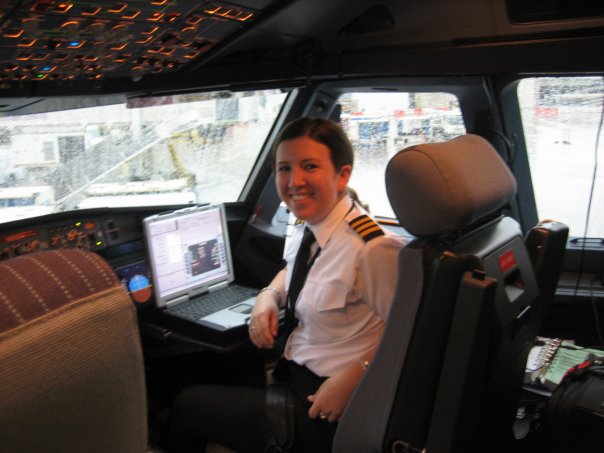I'm sorry that I haven't been updating daily, but even ground school is exhausting! I have a day off today, however! Today's agenda is to take advantage of the great weather and study by the hotel pool.
Tomorrow I start SITs. In the SIT we practice operating the aircraft systems in situations more like what we'll be seeing on the line. I hope I do well! It's been 18 months since I've been in the cockpit so I feel out of practice. After I've gotten enough UV rays today I'll come back inside to practice my flows on the cockpit posters I have in my room.
I'm going to avoid discussing our union issues in the blog, as I'd rather keep my mind on training. I will say, however, that I truly hope the union and the company come to an agreement before a strike -- striking keeps us out of the cockpit and keeps the company from making money; it's not good for either party. At the same time, however, we won't sacrifice our quality of life. You can read the Airline Pilots Association's press release here.
The other day in class we discussed landing distance multipliers and factors that necessitate an increase in approach speed. After the Southwest Airlines runway overrun at Midway airlines have focused on ensuring adequate runway distance available.
We spent a decent chunk of time on a new flow chart that we can use to decide how many knots we need to add to our approach speed, as well as any increases in runway distance (called multipliers). A small change in aircraft configuration due to a malfunction or even a strong crosswind can increase landing distance by 10% to 35%.
Our normal Vapp in the A320 is around 123-126 knots. Some malfunctions such as inoperative flaps will significantly increase Vapp. Approach speed sometimes must be increased up to 20 knots.
The procedure keeps you aware of how the malfunction (or weather) can affect your landing speed and distance, something that pilots flying any type of airplane, from a C150 to an A380, could definitely apply.
Another major safety initiative highlighted in our training is stabilize approaches - but I'll save that for another blog post!
Subscribe to:
Post Comments (Atom)

No comments:
Post a Comment